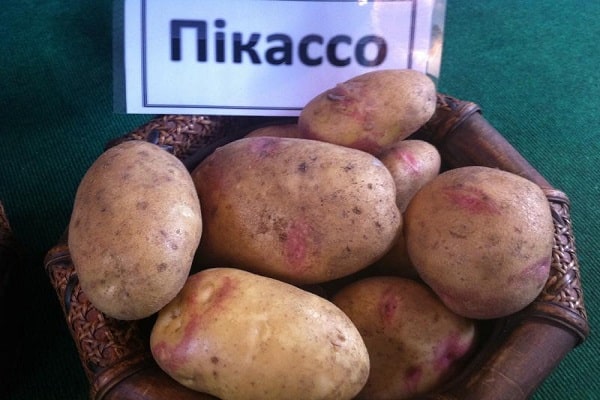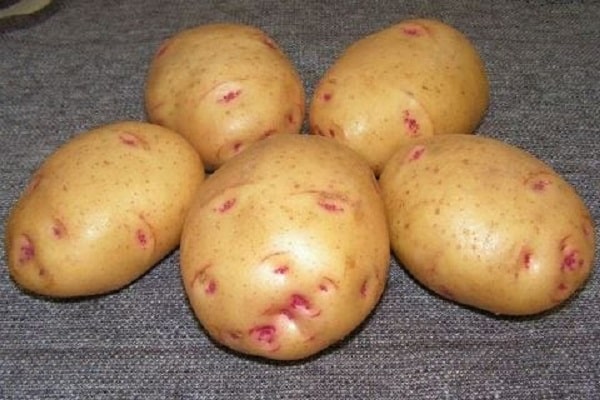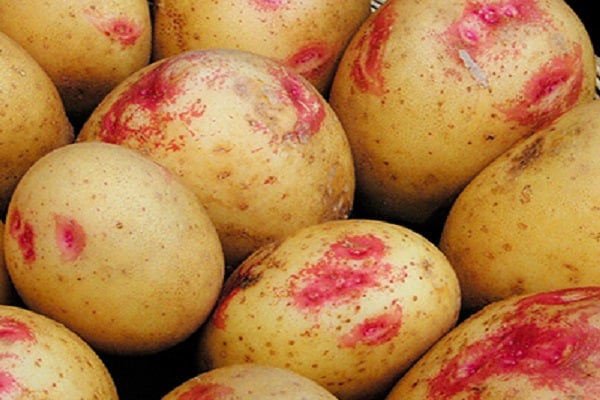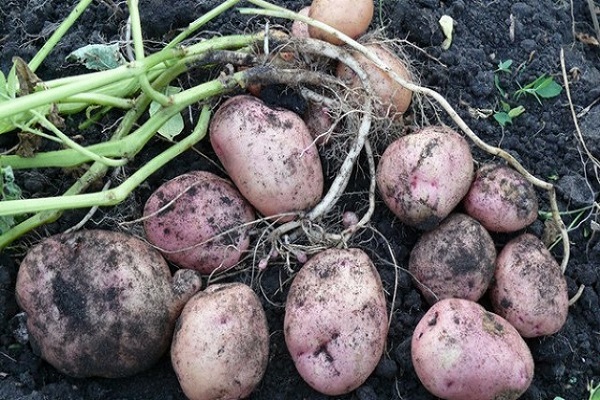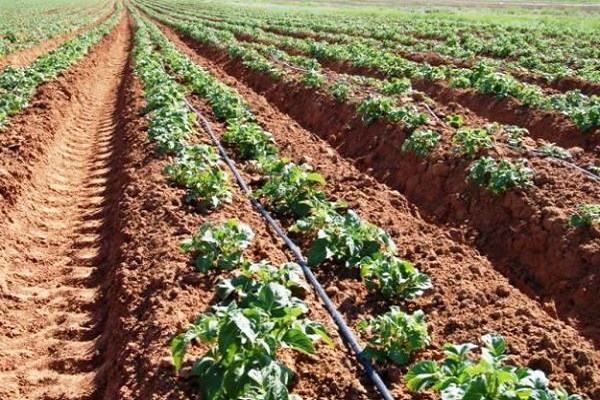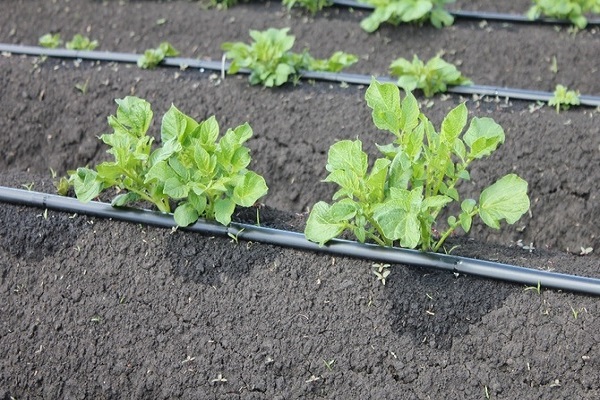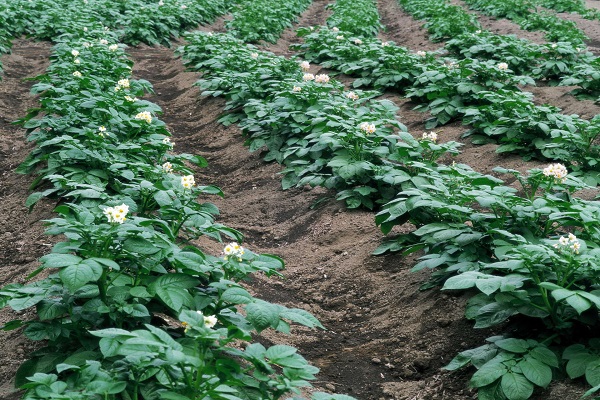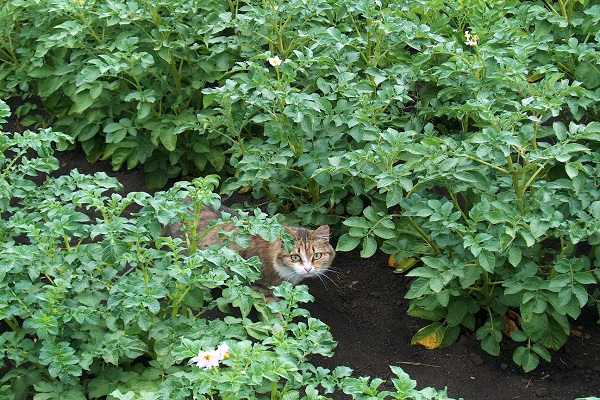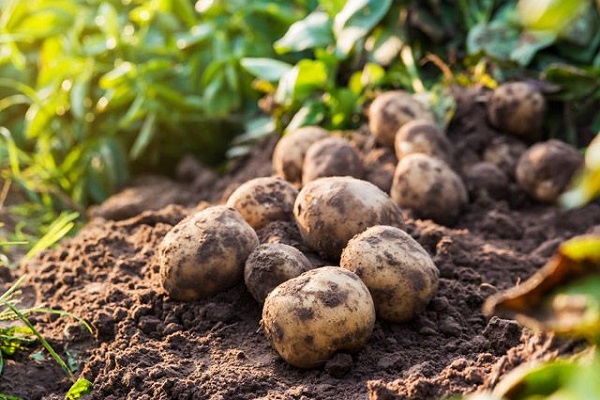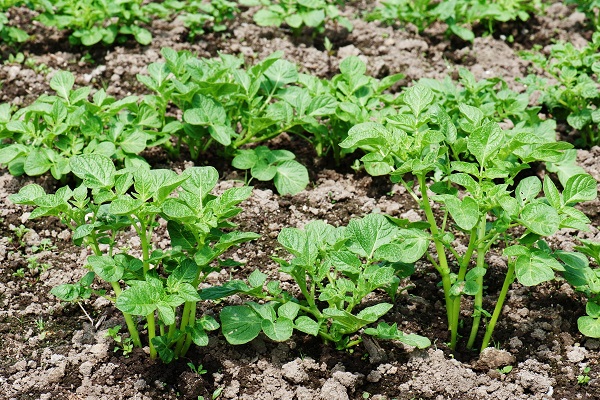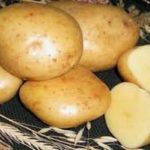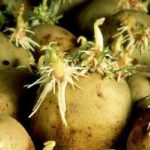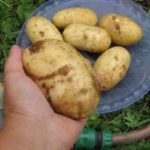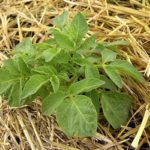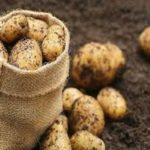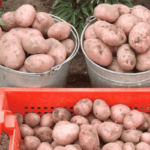Picasso potatoes were developed in Holland. This late-ripening variety is popular among Russian gardeners. The product has excellent technical characteristics and consumer properties.
Picasso is often planted in small gardens. It is unpretentious and resistant to major diseases. Even the Colorado potato beetle is not attracted to the plant.
Gardeners affectionately call potatoes Little Red Riding Hood, Ivan da Marya, Matryoshka, Ryabukha. In 1995, the variety was included in the State Register of Vegetable Crops of the Russian Federation. Recommended for cultivation in the Central and Central Black Earth regions.
What attracts gardeners
The Picasso potato variety is often found in summer cottages. Gardeners appreciated it. They are especially attracted by their unpretentiousness and productivity.
Description of the variety:
- belongs to the late-ripening group (up to 140 days pass from germination to lodging of tops);
- the skin is thick, yellow with pink spots;
- a large number of strongly recessed ocelli;
- the pulp is dense, creamy or creamy in color;
- tall, spreading bush;
- the color of the tops is bright green;
- in a nest there are up to 20 tubers;
- tuber weight from 70 to 140 g;
- starch content up to 12%.
Picasso potatoes store well due to their low starch content. The dense peel allows you to transport the crop without loss. Picasso's marketability is 95%.
Potatoes are distinguished by the uniformity of the tubers. The weight and size in the nest are almost the same: there are no small ones. Gardeners who comply with agronomic standards receive up to 300 kg of tubers per hundred square meters.
How to use the harvest?
Picasso is a table variety. Due to the low starch content of potatoes, various dishes are prepared from them. Gardeners boil, fry, bake potatoes. Tubers do not crumble when exposed to heat. Some note the special taste of puree made from Picasso.
How to plant correctly?
The characteristics of the variety promise a high yield of tasty tubers. But without following the rules of agricultural technology, results cannot be achieved. Growing conditions:
- The soil should be prepared in the fall. Dig up the ridges and pick out the weeds.
- Potatoes prefer neutral or slightly acidic soils. On acidic ones, add lime, ash or dolomite flour. Alkaline - treat with acidic peat.
- Soils must be well structured. They must allow air and moisture to pass through well. On heavy soils, sanding is carried out, on light soils (sand and peat) - claying.
- To enrich the land with nitrogen and improve its health, it is recommended to plant the site of the intended planting with green manure. Mustard, phacelia, rye, and oats are suitable. Mustard and phacelia do not need to be dug up in the fall. Over the winter they will rot under the snow. After growing 10–15 cm, dig up rye and oats and embed them in the soil.
- In the spring, nitrogen fertilizers should be applied a week before planting tubers. Humus or mature compost will do. Consumption rate: bucket per square meter of ridge.
- After planting, the tubers will require additional nutrition. This will be ensured by adding the mineral complex according to the manufacturer’s instructions.
Picasso does not require pre-germination. It is enough to warm the potatoes in the sun for a week. To accelerate the development of plantings, it is recommended to treat the seed material with any stimulant: Epin, Potassium humate.
If there is a lack of seed stock, it is permissible to cut the tubers into pieces with 2-3 eyes. The operation is carried out with a knife treated with alcohol or potassium permanganate. Air dry the cut area. Then grease with brilliant green or sprinkle with activated carbon.
It should be planted after the soil has warmed to 9 degrees Celsius. Planting pattern: 45 cm between rows, 70 cm between bushes. On light soils it should be buried 9–10 cm, on loams – 6–7 cm.
Folk sign: it’s time to plant potatoes if the birch tree has a leaf the size of a nickel. At this time, there is enough moisture in the soil; return frosts have already passed.
How to care?
Picasso is an unpretentious vegetable. But it is necessary to follow the growing rules. How to proceed:
- If the mineral complex was not introduced during planting, feed for the first time after the tops grow 10 cm. The second feeding is done before flowering.
- Hilling should be carried out simultaneously with fertilizing.
- Remove weeds regularly.
- Picasso gets by with a minimal amount of moisture in the soil. But in severe drought, watering is required. The soil should be wet by 10–15 cm. Repeat once a week. After irrigation, be sure to loosen the ridges.
- A signal of potato ripeness is the drying and lodging of the tops.
Some gardeners mow the tops a week before harvesting. This helps the underground parts of the plant to ripen. But Picasso does not need such a measure: the outflow of nutrients from the tops to the tubers occurs naturally.
Tubers should be dug up in dry, sunny weather. Gardeners use pitchforks: they cause less damage to the crop.
Potatoes should be left in the sun for 2–3 hours to dry and disinfect: such tubers are stored better.
Proper organization of the cellar will allow you to avoid losses during storage. It should be whitewashed and have good ventilation. The temperature should be maintained around 5-6 degrees Celsius.
What is it sick with?
Picasso is a disease-resistant variety. It is not affected by fusarium, scab, and group X and Yn viruses. But late ripening potatoes are not resistant to late blight. To protect against misfortune, preventive measures should be taken: observe the rotation of vegetable crops, remove plant residues after harvesting, and cultivate the soil.
Potatoes should not be planted next to tomatoes, eggplants, peppers, strawberries and garlic. These plants oppress each other.
Gardeners' opinions
Gardeners from different regions share their impressions of the variety. Picasso's peculiarities lie in his unpretentiousness. It produces excellent harvests in the middle zone and southern regions.
Summer residents of hot regions plant the variety very early (in March) or very late (late June). A good harvest is obtained in both cases.
Gardeners conducted research. Two equal plots of land were allocated. They were equally prepared for Picasso's landing. Sprouted tubers were planted on one of them (the stolons were 0.5 mm long). Tubers heated in the sun for a week were simultaneously placed in the second plot.
In the first plot, seedlings appeared 4 days earlier. On the second the sprouts were stronger. The potatoes quickly gained green mass. The care was the same. The harvest from the two plots was almost equal.


